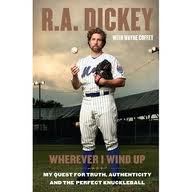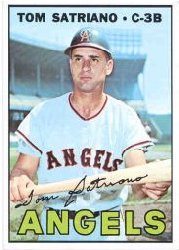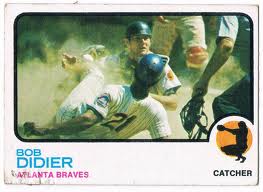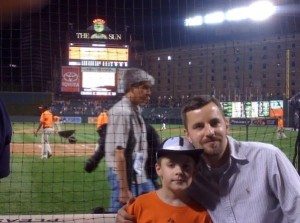“Butterflies aren’t bullets. You can’t aim ‘em. You just let ‘em go.”
— Charlie Hough
The knuckleballer-turned-tutor may have done more than tutor R.A. Dickey’s pitching. Hough may have given a nugget of wisdom employed in the writing of Dickey’s Wherever I Wind Up: My Quest For Truth, Authenticity and the Perfect Knuckleball.
In writing his life story, Dickey uses the same approach. This is anything but a conventional baseball tale. Dickey lets it all go, telling about the abuse he suffered as a boy, his sometimes-shaky marriage and other challenges to what many might assume has been a storybook career.
Definitely, this book is a LIFE story, not just a baseball retrospective. Dickey writes chronologically (and in present tense, giving his writing freshness and urgency). Page 91 begins his pro career with the Rangers. He relives the heartbreak of losing the $810,000 signing bonus, when a Baseball America cover photo reveals that Dickey may have elbow problems.
Dickey’s evolution as a knuckleballer gets center stage in the book. He tells of seeking out Hough, Phil Niekro and Tim Wakefield for advice. Funniest moment in the book comes when Dickey breaks a nail. In full Mets uniform, he’s sneaked out to a manicure salon for some emergency grooming.
The press release from publisher Blue Rider Press included a revealing comment from Dickey, seen nowhere in the book. Here it is:
“Q: How did your interest in literature shape Wherever I Wind Up?
A: Well, I can tell you this: I did not have much interest in writing a straightforward sports book. This is my first book. It might be my only book. I didn’t want to just stuff it with a bunch of statistics and writes about ERAs and holding runners on and bore people with page after page of baseball platitudes. I wanted to write a narrative that was meaningful to me, that was completely honest and that would hopefully stand up as a quality piece of writing.”
This thoughtful book might lead fans to guess that Dickey has the insight to become a coach or broadcaster. Read closely, and you’ll discover that Dickey harbors the hope that he could be a high school English teacher someday.
Ultimately, readers will find the life and career of New York’s elder statesman evolving like his knuckleball. While his butterfly pitch deceives, Dickey delivers his whole life story with right-down-the-middle candor and truth.
Coming Friday: Memories of Jewish baseball players.




